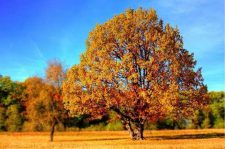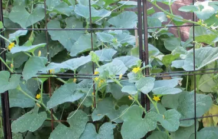1712 Claflin, 2021 Throckmorton Plant Science Center
Manhattan, KS 66506 (785) 532-6173
ANNOUNCEMENTS:
Final Countdown!
Horticulture Newsletter Needs Assessment
This is the final month for the Horticulture Newsletter feedback survey. Follow the link below to complete a brief survey. All responses are anonymous. Thank you!
Horticulture Newsletter Needs Assessment
K-State Garden Hour Wednesday, February 5, 2025 12:00 PM – 1:00 PM
Register to attend this free webinar here:
https://hnr.k-state.edu/extension/consumer-horticulture/garden-hour/
Drip irrigation is an effective, easy-to-install and widely available method for enhancing landscapes while conserving water. It delivers water directly to the root zone, achieving over 90% efficiency compared with 50-70% for traditional sprinklers. Join Gregg Eyestone, Riley County Horticulture Agent, to explore water conservation practices and learn more about the benefits of drip irrigation.
Garden Spotlight
In 2024 we began a new feature called the “Garden Spotlight”. We highlighted multiple Kansas gardeners sharing their creative strategies for successful gardening as well as what led them to become a gardener. We know how important it is to learn from each other’s experiences so we’d like to continue offering this feature in 2025. Please consider sharing your garden story with us.
Here’s what it takes:
Email hortsupport@ksu.edu with the subject: Garden Spotlight to let us know you’d like to feature your garden in an upcoming newsletter
We will respond to you with a list of questions for you to answer at your convenience.
As we turn your responses into a newsletter story we will send more questions to you, as needed, for clarification.
We will ask for photos to include along with the story.
We will send a draft of the story to you for final approval prior to publishing.
Your story will be published in one of the newsletters bringing joy and motivation to all who read it.
VIDEO OF THE WEEK:
Sowing Success: Research-Based Gardening for Beginners
(K-State Garden Hour January, 2025)
Whether you are a new or experienced gardener our essential guide to growing vegetables is a useful resource.
GARDEN CALENDAR
Start seeds indoors: Cabbage, Broccoli, Cauliflower, Lettuce
Prune fruit trees between Mid-February through March
FRUIT
Planning on Planting Fruit Trees?
Fruit trees are susceptible to many diseases and pests. Take the time to do some planning and give your trees that best chance of success saving you time and money.
Fruit trees require plenty of space in full sun with well-drained soil. Some varieties of trees require multiple plants for pollination while others are self-fruitful.
Here is a guide from K-State Research and Extension for Planning your Fruit Garden.
Small- and Tree- Fruit Cultivars, is another great resource that provides information about types of fruits to consider including their harvest timing, size and pollination requirements.
FLOWERS
Sharing the Love – Valentine’s Day Flowers
If you’re like much of America, you’re preparing to either give or receive a bouquet of roses. Here are some care tips to get the longest-lasting arrangement.
Roses often come in a plastic sleeve which retains moisture. The sleeve should be removed after purchase.
Cut 1½ to 2 inches of each stem with a clean, sharp knife or flower snips. Uncut stems cannot efficiently absorb water needed by the flower to open fully. (Current research suggests that cutting stems under water is not necessary.)
Remove any leaves that will be underwater once stems are arranged in the vase.
Follow directions on flower food packet to mix the right amount of cold water to food ratio into the vase. Flowers need to be nourished. Professional flower food generally contains three ingredients:
Carbohydrate – (sugar) nutritional source
Acidifying agent – lowers the solution pH and improves water uptake
Microbiocides- reduces microbial growth
Arrange freshly cut stems into the vase.
Check the water level daily, repeat steps 2-5 every 2-3 days so flowers last as long as possible. Keep flowers away extreme cold, heat, direct sunlight and sources of ethylene gas (fruits and vegetables). (Irina Sheshukova)
DISEASES/PESTS
Fungus Gnats on Houseplants
Have you noticed tiny insects flying around your home or office? Fungus gnats are common household pests that are quite annoying. Here are some ways to keep them in check.
Water houseplants only as needed rather than on a regular schedule to avoid oversaturating plants and attracting fungus gnat.
Dump water out of the saucer once it drains so plants are not in standing water.
If fungus gnats are already present in your plants, allow the soil to dry at least through the upper three-inches.
For extreme cases, repot the plant in fresh soilless media. Remove as much soil as possible from the plant roots to eradicate the eggs and larvae of the gnats.
Scale Insects
Varying in size and host, scale insects cause damage by sucking sap from plants. Their damage is not restricted to just trees and shrubs. They can devastate crops of herbaceous ornamentals as well. The time for investigating plants for scale is here and early detection is the best way to prevent crop damage.
Many scale varieties have white, tan or brown shell-like coverings that are round or oval in shape. They can blend into the bark so close inspection is necessary. If signs of scale are found, a dormant oil can be used as long as the plant is in dormancy and the temperature is above 40 degrees F. Dormant oils are beneficial because they can combat a wide range of life stages for scale insects. They are less detrimental to beneficial insects because of the application timing and are less toxic than chemical controls. Read more about the use of dormant oils from K-State Extension Entomology.
Here are some resources to check out for more information about specific scale insect varieties and their hosts.
Euonymus Scale
Magnolia Scale
Pine Needle Scale
San Jose Scale
MISCELLANEOUS
Wildlife Management Podcast
Are you looking for a new podcast to follow? Are you wondering what to do about beavers, armadillos or moles?
K-State Research and Extension Specialists, Drew Ricketts and Joe Gerken, have a podcast and YouTube channel that provides Kansans with science-based wildlife management information. New timely recordings are added regularly and you can view the archive anytime.
KSRE Wildlife Management (YouTube Channel)
Fins, Fur and Feathers (Podcast)
QUESTION of the WEEK
Planting Spring-Flowering Bulbs…Still?
I have a bag of tulip and daffodil bulbs in my basement. I meant to plant them last fall but time got away from me. Should I plant them now or wait until next fall?
If the bulbs are still firm, they should be planted now to avoid rotting. They may not bloom this spring, but at least they weren’t wasted. Another option is to force the bulbs to bloom indoors.
Plant them in containers and keep them chilled for the required time which depends on the variety. Then move the containers to a bright room to promote blooming.
For those of you who did get your bulbs planted last fall here are some tips to get the most out of the bloom season.
Deadhead blooms as they fade to prevent seed development and allow bulbs to store more energy for future blooms.
Leaves should be left intact until they die back naturally to allow them to store energy in the bulb.
If leaves emerge from the soil early don’t be too concerned. When freezing temps return the leaves may develop some brown tips but the plants should be fine. If buds emerge you can cover them gently with mulch.
Contributors:
Cynthia Domenghini, Instructor and Horticulture Extension Specialist
Irina Sheshukova, Instructor and Floral Design Extension Specialist
Raymond Cloyd, Professor of Entomology (photos of scale)
Kansas Garden Guide
Division of Horticulture
1712 Claflin, 2021 Throckmorton
Manhattan, KS 66506
(785) 532-6173
For questions or further information, contact your local extension agency.
This newsletter is also available on the World Wide Web at:
http://hnr.k-state.edu/extension/info-center/newsletters/index.html
The web version includes color images that illustrate subjects discussed. To subscribe to this newsletter electronically, send an e-mail message to hortsupport@ksu.edu listing your e-mail address in the message.
Brand names appearing in this newsletter are for product identification purposes only. No endorsement is intended, nor is criticism implied of similar products not mentioned.
K-State Research and Extension is committed to making its services, activities and programs accessible to all participants. If you have special requirements due to a physical, vision or hearing disability, or a dietary restriction please contact Extension Horticulture at (785) 532-6173.
Cynthia Domenghini, Ph.D.
Instructor; Horticulture Extension Specialist
Department of Horticulture and Natural Resources
Kansas State University
1712 Claflin Rd.
Manhattan, KS 66503
785-340-3013
cdom@ksu.edu




